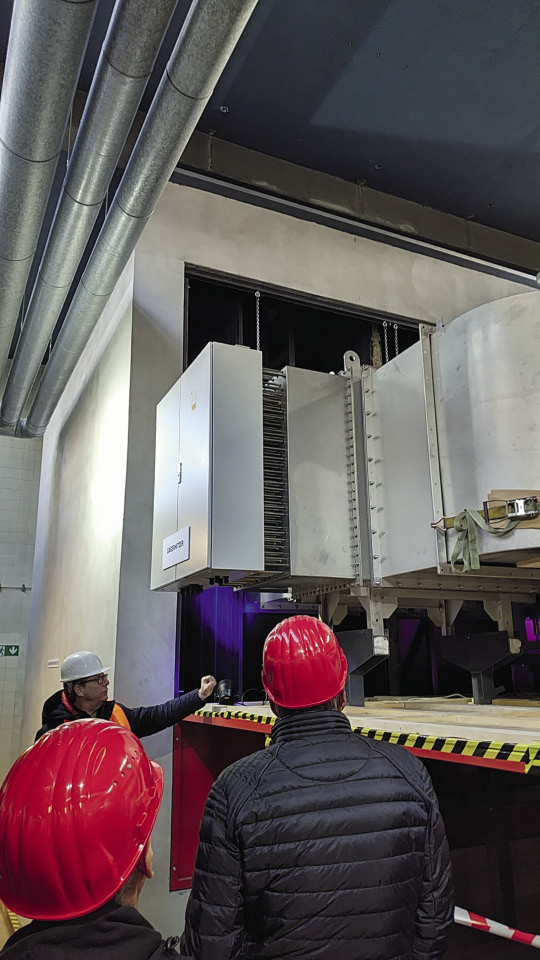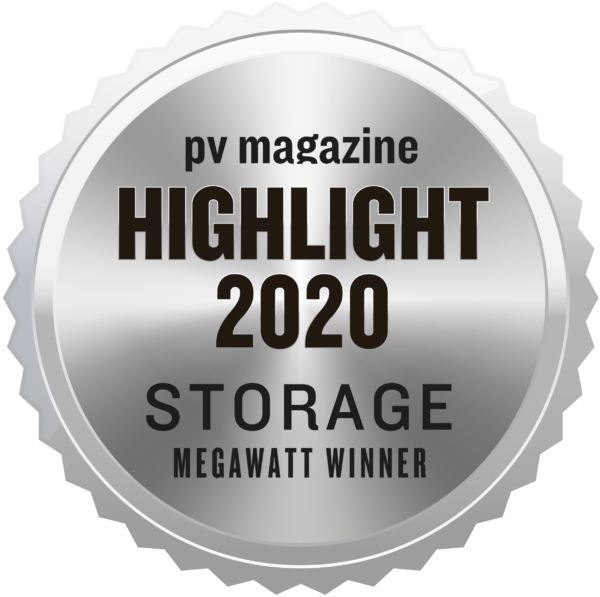Built in partnership with Messe Düsseldorf and Energy Storage Europe, pv magazine’s annual Energy Storage Highlights 2020 special edition is hot off the press. Celebrate this year’s top five awardees at our Insight panel session with discussion among our Gigawatt winners and panel of expert jurors.
Introducing Megawatt Winner…
Lumenion
Combining electricity and heat with low-priced storage
Berlin startup Lumenion is advancing “flexible sector coupling.” The company has installed a steel storage system in one of Vattenfall’s Berlin district heating networks, which can temporarily store excess solar and wind power with a high degree of efficiency. The solution is capable of converting 25% of thermal energy back into electricity.
If you think steel is “old economy” or outdated technology, think again. Assuming Lumenion’s projects are successful, this heavy-industry material will solve a problem that lithium-ion batteries have not been able to cope with so far. Solar radiation generally fluctuates in 12-hour cycles, and wind power also comes in waves with 18 to 24-hour intervals of little or no wind, according to Lumenion. This means that a storage system is needed that can be operated economically at an average of 180 cycles per year. In addition, the peak loads at which this energy has to be stored are about three times as high as the peak loads at which the storage systems are later discharged.
With purely electrical storage, this translates into comparatively high costs for power electronics. If lithium-ion batteries were used for this type of storage, in the very best case, the power they store would cost at least €0.08 per kilowatt-hour, according to Philip Hiersemenzel, Lumenion’s press officer. By contrast, the steel storage system can be operated at €0.02 per kilowatt hour, assuming a service life of 40 years and just 150 cycles per year.
For storage, electrical energy heats a huge steel block by up to as much as 650 degrees Celsius. This can be done with low tech, so to speak, which means that the high feed-in peaks do not drive up the cost of power electronics. The thermal energy is then used either as industrial high-temperature process heat, or as low-temperature heat, in a district heating network or for greenhouses.
If necessary, up to 25% of the energy can be converted back into electricity. To accomplish this, a steam turbine can be connected to the system which can be operated due to the high temperature. It is well known that reconversion of thermal energy into electricity is not very efficient when only the electrical energy is considered. However, the remaining low-temperature heat of 100 to 120 degrees Celsius can still be used in the heating network. As a result, the overall efficiency of the system is around 95%, according to the company. If you subtract what the heat is worth from the price of electricity, you might even be able to achieve electricity costs of €0.03 to €0.04, competitive with gas-powered plants.

Popular content
At the end of the day, Lumenion is not competing against battery storage systems, but against thermal storage systems that use other materials – with the most well-known likely being hot water. However, these storage systems are operated at just 150 degrees, which is insufficient for some applications, as it doesn’t allow for efficient reconversion into electricity. With concrete or molten salt, similar storage concepts can be implemented as with the steel storage tank. Lumenion argues that the steel concept is ultimately more cost-effective, that steel is easily recyclable, and that it retains much of its value – which after 40 years of service life still offers positive benefits to the operator.
In 2019, such a steel storage system with a capacity of 2.4 megawatt-hours and a charging power of 340 kilowatts went into operation in a Berlin district heating network operated by Vattenfall, but still without a gas turbine for reconversion. A 40 MWh project is planned for 2020.
After that, the growth in size is expected to continue, as the technology becomes cheaper and is deployed on a larger scale. The vision is to expand to gigawatt-scale storage systems that are the size of home improvement stores. Then, finally, the turbines for reconversion of heat into electricity would also be installed.
Jury comments
Julian Jansen: “The Lumenion energy storage system can provide crucial capability for realizing the wider energy transition. It is a strong example of how technology innovation will drive sector-coupling and help decarbonizing both electricity and heat.”
Nina Munzke: “Very interesting approach for a future large-scale heat supply.”
This content is protected by copyright and may not be reused. If you want to cooperate with us and would like to reuse some of our content, please contact: editors@pv-magazine.com.



1 comment
By submitting this form you agree to pv magazine using your data for the purposes of publishing your comment.
Your personal data will only be disclosed or otherwise transmitted to third parties for the purposes of spam filtering or if this is necessary for technical maintenance of the website. Any other transfer to third parties will not take place unless this is justified on the basis of applicable data protection regulations or if pv magazine is legally obliged to do so.
You may revoke this consent at any time with effect for the future, in which case your personal data will be deleted immediately. Otherwise, your data will be deleted if pv magazine has processed your request or the purpose of data storage is fulfilled.
Further information on data privacy can be found in our Data Protection Policy.